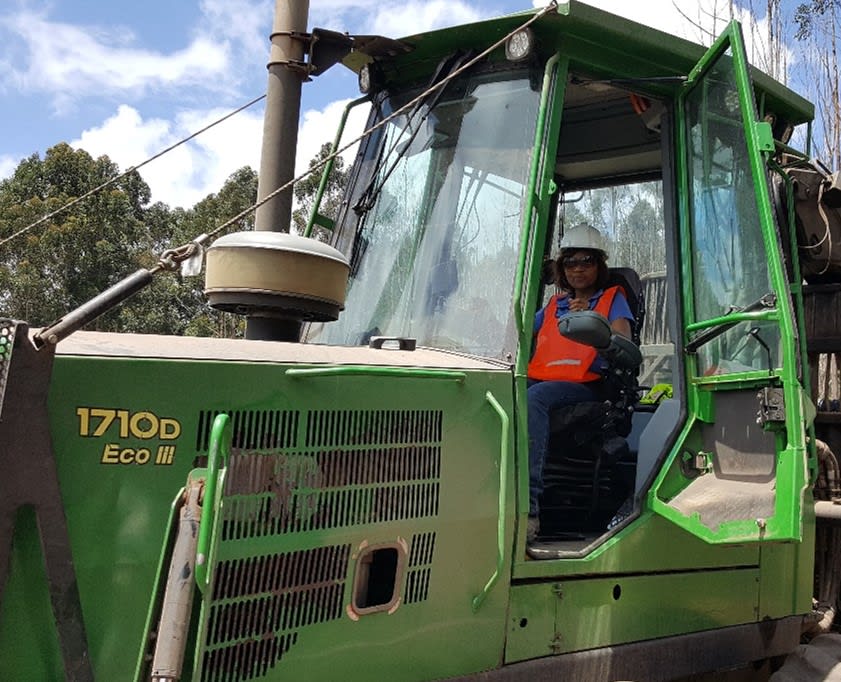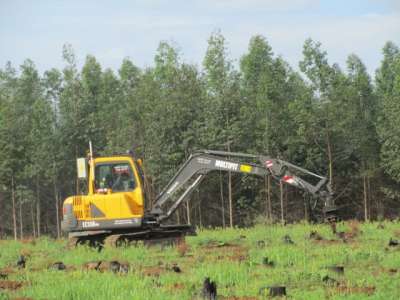Introduction
Machine operators play an important role in the success of any mechanised silviculture operation. The operator’s wellbeing and training can have a significant influence on the machines output and the overall health and safety within the work environment. Even though silviculture activities are repetitive nature, there is still a great level of operator intervention required to operate and to ensure it works according to the required standards. With the increase in mechanisation in silviculture operations, the need to focus on the machine operators and their impact on the overall efficiency of the operation is important. Since harvesting operations have been fully mechanised for some time, many investigations have been conducted to understand and quantify the impact of the operator’s working environment and differences in operators performing harvesting work. This article focuses on fully mechanised equipment performing activities such as soil preparation, planting, weeding or any other combination of silviculture activities. Ensuring that the activities are performed efficiently and correctly is important for the successful establishment and tending of any forest stand, the operator is at the center of all of this.
Ergonomics
Ergonomics aims to improve the safety, comfort and productivity of the operator performing the work. It can include factors such as workplace dimensions, noise, light, variable temperatures, whole body vibrations and operator fatigue. The forest working environment (e.g., rough terrain, climate, insects etc.) is harsh. Mechanised silviculture work may expose the operators to ergonomic risks which may also result in musculoskeletal disorders amongst other issues. Most mechanised silviculture equipment (e.g., soil preparation, planting machines) have been adapted from standard excavators-based machines, forwarders, tractors or tracked dozer equipment where ergonomic risks have been identified and reported. In most cases, these equipment are to some extent designed with a degree of ergonomic considerations. However, the risks of arm, neck, shoulder, legs and lower back which are common in mobile machine operators are still prevalent and need to be assessed and mitigation measures introduced. As mechanisation of silviculture work increases it is important that ergonomically friendly working conditions be accurately assessment by considering the work demands and risks associated with the work.

Productivity
When conducting mechanised silviculture operations, the machine productivity is important. The machines productivity can be affected by many factors including the specific operator using the machine. The learning curve - It is well known that when an individual begins to operate a machine their productivity is low and as they progress and become more familiar with the machine the productivity increases until it reaches their peak performance. In harvesting, productivity differences between operators can vary by up to 40%. Studies have found that the operator’s skills, experience and age are important factors that may influence the machine operator’s productivity output. In silvicultural equipment, even though the operator’s productivity is important, it must be associated with the correct quality of work. For example, a high productivity in terms of hectares planted with high mortality because of poor-quality planting is not acceptable. Furthermore, the treatment of the machine is important as high productivity may be achieved temporarily but lost due to low machine availability - due to damages to the machine by not conducting maintenance as required, unnecessarily during over obstacles and harsh movements of working components of the machine. Another important consideration is that machine operators performing silvicultural work also take on the responsibility of ensuring they have enough resources (e.g., seedlings, water, fertilizer etc.) and ensure they replenish the machine regularly. Most equipment can be equipped with telematics systems which enable monitoring of the machine’s performance as well as the operator’s use of the machine, this tool can be important to improve the productivity of the machine and assist the operator if needed. This specific area of machine operators and their influence on machine productivity still needs to be explored comprehensively across different existing and new silviculture machines.
Training
Training can be conducted by machine manufacturers, by experienced operators, designated training service providers or by using training support instruments such as simulators (virtual reality). Most training is conducted by machine manufacturers as they test and release the machines for use in silviculture operations. However, subsequent training on the same machine is often conducted on the job by other experienced operators. Proper training is important to ensure that new operators do not inherit incorrect habits which may inhibit their efficiency and affect the long-term performance of the machine. It is important that proper training is conducted by the machine manufacturer or designated service provider with the required expertise. Furthermore, experienced operators need to be assessed for improvements and refresher training conducted if the need arises.
Conclusion
The aim of this article was to briefly highlight important factors to focus on when it comes to operators of silviculture equipment. Even though the outdoor environment is beautiful and refreshing for many people who have become accustomed to urban areas, mechanised forestry work is often conducted in isolation and in harsh environments, it is monotonous and in future (in some areas) it may become difficult to attract operators to perform this type of work. For now, it is important to focus on improving ergonomics, productivity and training of machine operators.



